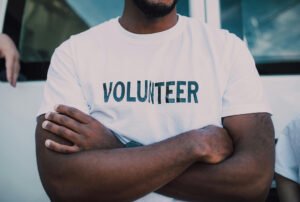
May 13, 2020; Scientific American, Guardian, and the Wall Street Journal
As states ease their restrictions, nonprofit leaders at all levels face some unsettling questions. Have we reached a point where we can safely open our doors? Is the virus sufficiently under control, and are we convinced we will not be adding unnecessary contagion opportunities by resuming “normal” operations? Do we trust that those who are making decisions and guiding the reopening process at the federal, state, and local levels are always making wise decisions?
Even if we had complete confidence in that more macro environment, which many of us do not have, nonprofits need to surface questions and build their own general guidance to feel comfortable in their decisions to reopen optimally and safely. After all, we know the details of our operations and localities best. This may take some work at local levels to share information, build protocols, and provide some mutual aid as networks. We wrote about such an approach yesterday among arts organizations in New York, but nonprofits probably need to take it to a different level to ensure we are moving in ways that are as informed and supported as possible.
For weeks, public health experts have urged caution and the need to manage the process based on clear guidelines for decision-making. The White House’s COVID-19 Task Force issued a blueprint; the three-phased approach in its “Guidelines for Opening Up America Again” was “based on the advice of public health experts” and designed to provide a national standard for “getting people back to work and continuing to protect American lives.” Still, pressure from those eager to restore the economy at any cost has been great, and they are being ignored, just like the guidance from the Centers for Disease Control and Prevention (CDC) that was stifled earlier this month.
As Dr. Georges Benjamin, executive director of the American Public Health Association, explained to the Guardian, “The White House is pushing for reopening but the truth of the matter is the White House has just not had a comprehensive plan where all the pieces fit. They’re doing it piecemeal.” As a result, according to Stephen Morse, a Columbia University expert on the spread of disease, “Many different places are considering how to safely develop return-to-work procedures.”
One key to moving forward is keeping pace with the disease’s ebb and flow and not getting ahead of our capacity. Testifying earlier this week before a Senate committee, as reported by the Wall Street Journal, Anthony Fauci, director of the National Institute of Allergy and Infectious Diseases, warned that we need to slow things down:
If certain areas prematurely open up, my concern is we might see spikes that turn into outbreaks. The consequences could be serious. Even in states that reopen with a deliberate pace…there is no doubt that when you pull back on mitigation, you will see some cases reappear.
Sign up for our free newsletters
Subscribe to NPQ's newsletters to have our top stories delivered directly to your inbox.
By signing up, you agree to our privacy policy and terms of use, and to receive messages from NPQ and our partners.
To follow a more measured path, we will need a public health infrastructure that is not in place. Testing capability needs to increase so we can test as many as 900,000 people daily. A cadre of contact tracers will be needed to respond to what testing discovers. Businesses will need to redesign their workplaces and workflows to increase social and physical distance. And we will need safety net supports to allow workers and employers to pay their bills as the economy heals. CDC Director Robert Redfield was clear in his Senate testimony: “It’s important to remember we’re not out of the woods yet.”
What’s more, as a nation, we struggle to achieve the discipline and political will to do what we should. Writing in Scientific American, Professor Pinar Keskinocak, director of the Center for Health and Humanitarian Systems at the Georgia Institute of Technology, worries that we are getting ahead of ourselves and not showing the discipline we will need to keep the virus at bay.
COVID-19 threatens almost all aspects of human life as we know it, from public health to supply chains and the economy to relationships. The health and well-being of the population is of utmost importance, but there is also a growing urge to relax physical distancing, to go back to normal, as economic and social pressures mount…
As states start lifting shelter-in-place orders, if very strict compliance with physical distancing guidelines slips, COVID-19 will spread fast and far.
Early indications say we still need to be cautious. CDC data reported by NBC News earlier this week show “spiking infection rates [that] suggest the pandemic is spreading quickly outside major coastal population centers that were early hotspots, while governors of some of the states that are home to new hotspots are following Trump’s advice to relax stay-at-home restrictions.” In this chaotic environment, nonprofit leaders are being asked to make difficult, critical decisions about the health of their organizations, those they serve, and those who work for them. They are being asked to guide their communities, and the fiscal urgency of this moment puts a heavy weight on the scales that will need to be counterbalanced.
Obviously, we need are clear, science-based guidelines and standards on the national level. But even if that were all in place, we would still have much to do with one another as we try not just to get back to what was deemed “normal,” but to reopen in ways that observe safety and create new ways forward for our communities. We have some choices ahead of us, and it is time we began to consider them together.—Martin Levine











